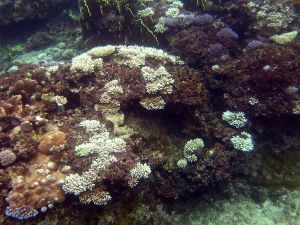Assessing the sustainability of culturally important marine sites in Guam and CNMI

This project was designed to use climate models to produce projections of changes in sea temperatures and ocean chemistry for coastal marine areas in Micronesia as well as reports that describe the outlook of culturally important marine sites in Guam and CNMI. The projections and maps were expected show what the current state of climate science suggests the future holds for marine areas in Micronesia if we continue to use fossil fuels aggressively. These projections of sea conditions will become the foundation of outlook reports for Tumon Bay in Guam, Lao Lao Bay and Saipan Lagoon in Saipan, and northern Tinian Island. The selected areas are among the most important sites for recreation in Guam and CNMI and, as such, are key to the economy of these islands. The outlook reports was expected to describe pressures in the focus areas as well as current ecosystem state and will forecast the sustainability of the sites under current and alternate management regimes. Project outputs were collaboratively developed with resource managers to ensure the outlook reports identify and prioritize near and long-term actions to maximize sustainability and goods and services provision. Community members, stakeholders and managers are expected to be interested in the outlook reports as many of the high priority actions identified will require reducing pressure on coral reefs through changes in human activities on the land and in the water.

PROJECT DETAILS
FUNDED:
FY2015
PI:
Laurie Raymundo
Professor of Marine Biology, University of Guam
Co-PI:
Jeffrey Maynard
Marine Applied Research Center

